There are more national parks in California than in any other state in the United States. And together, the nine California national parks offer one of the greatest wilderness aggregations on the planet.
If you are a nature lover, a landscape photographer, or an outdoors enthusiast, you will definitely want to put California’s national parks on your bucket list.
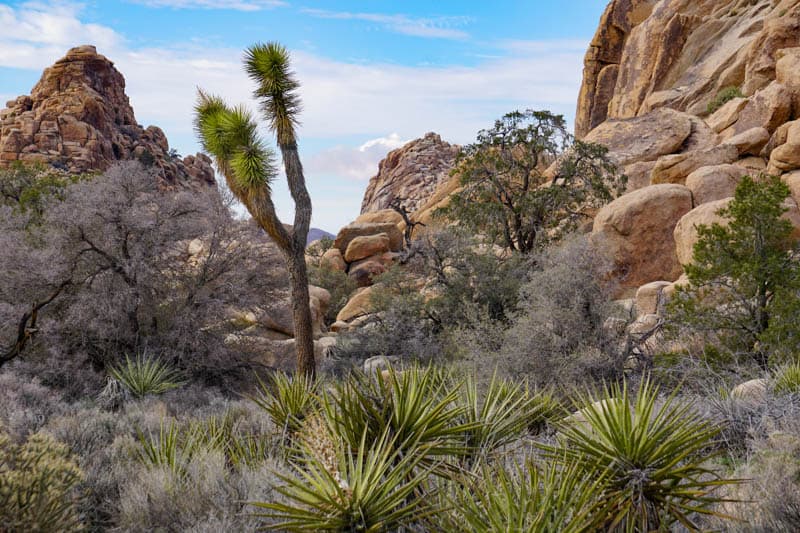
Some links on this page may be affiliate links. If you click an affiliate link and make a purchase, we may receive a small commission, at no extra cost to you. For more details, refer to our disclosure.
From Yosemite to Death Valley, California’s national parks inspire infinite wonder, and you can’t help but feel an almost aching appreciation of their untamed beauty. Dramatic landscapes, diverse flora and fauna, and amazing adventures await you at each one of the national parks in the Golden State.
One of the best things about the national parks in California is that they cover all sorts of landscapes and weather zones, so no matter what time of year you visit, you can be sure you’ll find one (or three!) national parks you can add to your California itinerary.
And if you plan to do a California road trip, you can cover more than one California national park on your trip. In fact, the national parks and other national protected areas in the Golden State make for great nature breaks in between cities and towns on your road trip itinerary.
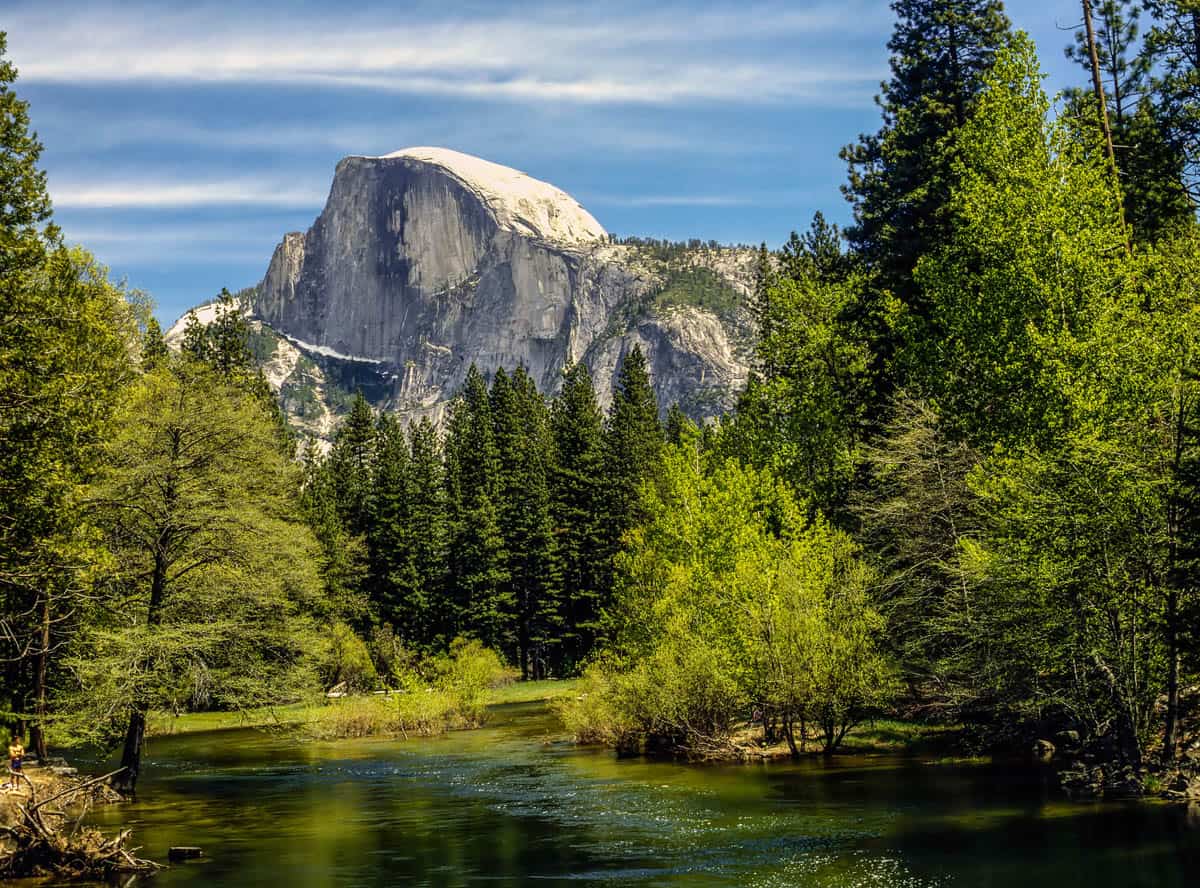
Our four-week California road trip itinerary takes you to five of the nine California national parks, with the option to visit a sixth if you choose.
Or you can craft a California national parks road trip itinerary just for the national parks, for an epic nature trip through the state.
TABLE OF CONTENTS
National Parks in California: What to See and Do
Yosemite National Park: Waterfalls and Granite Walls
Death Valley National Parks: Salt Flats and Sand Dunes
Joshua Tree National Park: Boulders and Joshua Trees
Channel Islands National Park: Sea Arches and Cliffs
Lassen Volcanic National Park: Fumaroles and Hot Pools
Sequoia National Park: Giant Sequoias and Tall Peaks
Kings Canyon National Park: Tall Trees and Deep Canyons
Redwood National and State Parks: Towering Redwoods and Coastal Views
Pinnacles National Park: Pinnacles, Condors, and Caves
National Parks in California: What to See and Do
We’ve visited all of the national parks in California, many of them more than once.
And yet, each time we plan another trip to one of these parks, we are filled with excitement, because each visit yields new views to photograph, new paths and trails to explore, and new opportunities to observe local plants and wildflowers, animals, birds, and insects.
And more often than not, we also return to spend some time at familiar haunts within the parks, because we love them so much that we can’t bear to leave without visiting!
Visiting one or more of the Golden State’s national parks should definitely be on your California bucket list.
Excited to find out more? Discover the must-see, must-do highlights of each of California’s 9 national parks!
Yosemite National Park: Waterfalls and Granite Walls
Did you know that Yosemite National Park is about the size of Rhode Island? America’s third oldest national park, Yosemite National Park came into being in 1890, and today it is one of the most visited national parks in the United States.
Located in the beautiful Sierra Nevada, Yosemite features iconic granite cliffs, some of the most majestic waterfalls in California, beautiful meadows and lakes, an enormous area of old growth forest, and diverse wildlife.
Yosemite is a UNESCO World Heritage Site.
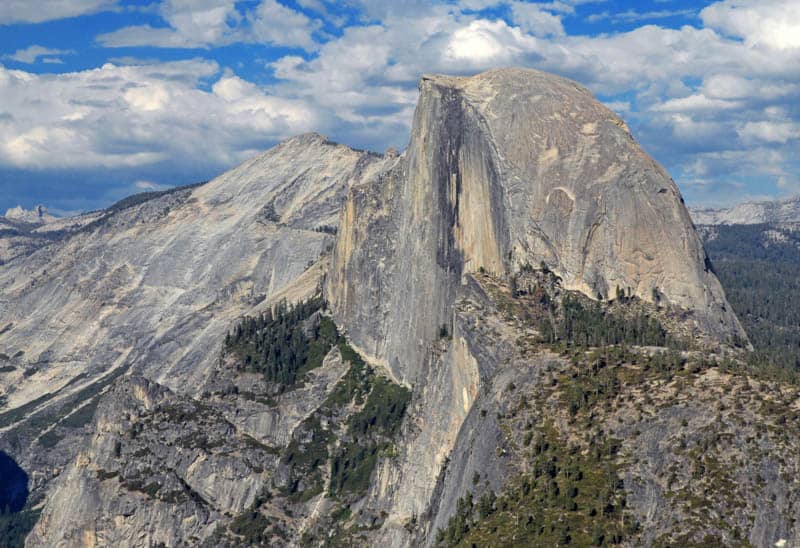
Yosemite is an excellent park for all types of visitors, from extreme outdoor enthusiasts to families seeking a vacation in nature, and from city dwellers that come to savor the wilderness to photographers seeking that perfect shot of Half Dome.
You can hike and bike at Yosemite, of course.
But you can also go climbing, stargaze, go sightseeing either in your own vehicle or in the park shuttle, camp and picnic, enjoy photography, and try to spot wildlife and birds.
Go on wildflower walks in the spring and summer, enjoy the colors in fall, and go skiing or snowshoeing in the winter.
Ranger-led programs are offered in season and can greatly enhance your experience and appreciation of the park.
Top Places to Visit in Yosemite National Park
You’ll likely spend the bulk of your time in Yosemite Valley, where you will find the most iconic attractions in Yosemite National Park.
At 4,000 feet deep, the valley floor is the perfect place to appreciate the towering walls of granite all around you.
Drive (or take the shuttle) to Glacier Point, to take in the views of Half Dome, the most famous granite formation in the park, and Yosemite Valley.
Also visit Tunnel View, for another look at Half Dome and El Capitan, another of Yosemite’s famous rock faces.
These two iconic Yosemite viewpoints are perfect for taking panoramic photos in the park.
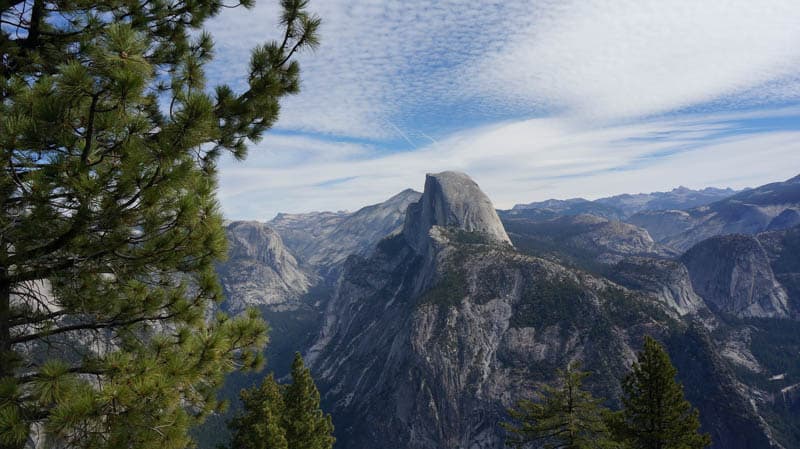
Visit Yosemite’s world-famous waterfalls, especially if you visit in spring, when the falls are in full flow. Yosemite Falls, at 2,425 feet, is the most iconic waterfall in the park.
Although you can hike to many of the famous waterfalls in the park, the short but steep hike to Bridalveil Fall is one of the most popular, and you can easily fit it into even a one-day visit to Yosemite.
The Mist Trail to Vernal and Nevada Falls is moderate to challenging depending on how far you go, but you’ll be rewarded with up-close, spray-in-your-face views of the two gorgeous waterfalls, as well as beautiful scenery all along the route.
Another popular Yosemite hiking trail, the paved walk to Mirror Lake is about 2 miles out and back. If you also do the loop around the lake, it’s 5 miles in all. If you are in Yosemite on a clear, calm morning, Mirror Lake is a must-visit for amazing photos of the surrounding cliffs reflected in its waters.
The drive along Tioga Pass Road is breathtaking. Plus there are many places to stop and explore en route.
Tenaya Lake, one of the most beautiful lakes in California, is just off the road. Olmstead Point offers stunning panoramic views. In late spring and summer, you can do wildflower hikes starting at or around Tuolumne Meadows.
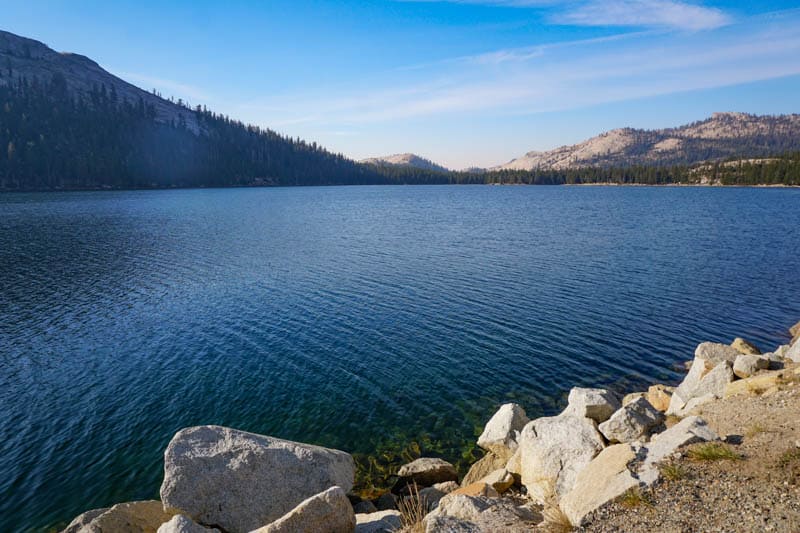
In the southern part of the park, the Mariposa Grove, featuring giant sequoias, is a must visit. There are several hundred mature specimens of the giant trees in the grove, and a number of hikes of varying lengths take you past many named trees.
For park hours and current fees, visit the park website
Do you have your National Parks Pass yet? Valid for one full year from the month of purchase, the America the Beautiful National Parks Pass costs USD 80.00 and offers admission (one vehicle or 4 persons) to over 2,000 Federal recreation sites, including national parks, national forests, and more! Get yours now at REI online!
Death Valley National Park: Salt Flats and Sand Dunes
The largest national park in the contiguous United States, Death Valley National Park is the hottest and driest place in the country.
Death Valley actually holds the record for the hottest temperature ever recorded on earth! No wonder Death Valley is one of the most popular places to visit in California in December.
Located east of the Sierra Nevada in the southeast part of California, Death Valley National Park hugs the border with Nevada. In fact, Death Valley National Park from Las Vegas is a popular day trip, because it is just a 2-hour drive from Sin City.
But you can also spend a few days in the park. We have an article on the best places to stay in Death Valley if you plan to overnight in the park.
The largely treeless desert park features astounding rock landscapes, mountain ranges (sometimes with snow!), gorgeous canyons and sand dunes, and vast saltwater flats. The park is home to lots of birds and animals as well.
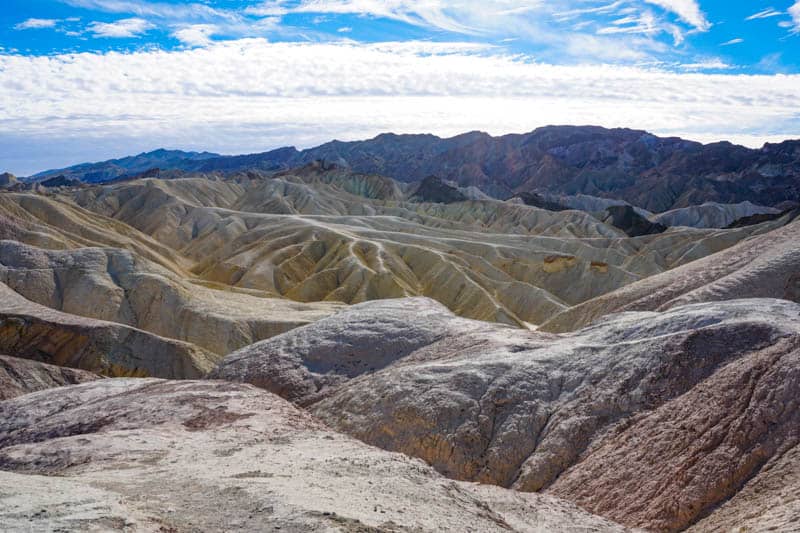
Drive through the park to take in all the major sights. Hike the otherworldly ridges and canyons. Photograph the colorful desert sunrises and sunsets. Stargaze: Death Valley is a Dark Sky reserve. Enjoy backcountry camping. Go biking or birdwatching. Arrive in a 4WD and explore the unpaved roads. In spring, marvel at the wildflower bloom.
Ranger-led programs are offered between December and March, and offer opportunities for unique experiences and in-depth insight into the park.
Top Places to Visit in Death Valley National Park
Visit Zabriskie Point for outstanding views over the golden and tan bands of the Furnace Creek badlands. For a super special experience, visit Zabriskie Point at sunrise, when the light over the badlands is magical.
Drive up to Dante’s Peak for panoramic views over the valley from high up. It’s the highest point in the park you can access in a vehicle.
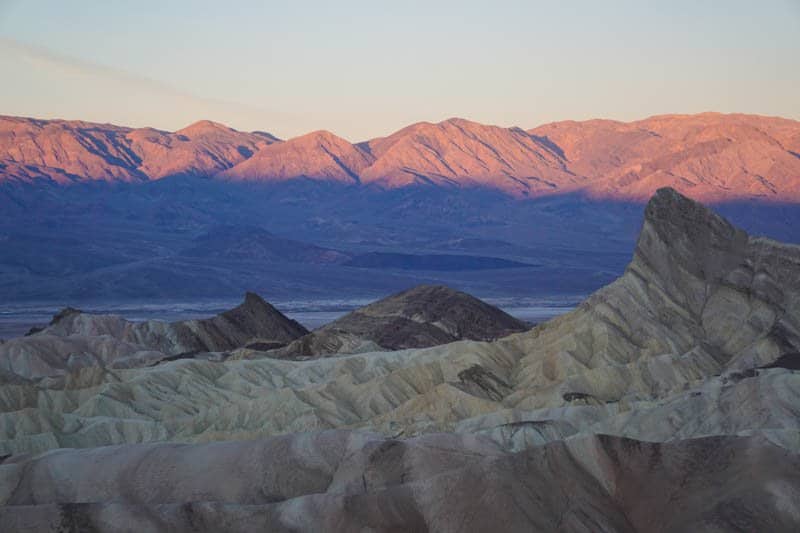
At Badwater Basin, walk the salt flats and feel the enormity of the landscape surrounding you. Here’s where you will find the lowest point in all of North America, 282 feet below sea level!
Drive the 9-mile unidirectional Artist’s Drive loop, and stop to gawk at the unreal colors in the rocks at the Artist’s Palette viewpoint. The rest of the drive isn’t too shabby either, when it comes to the scenery factor.
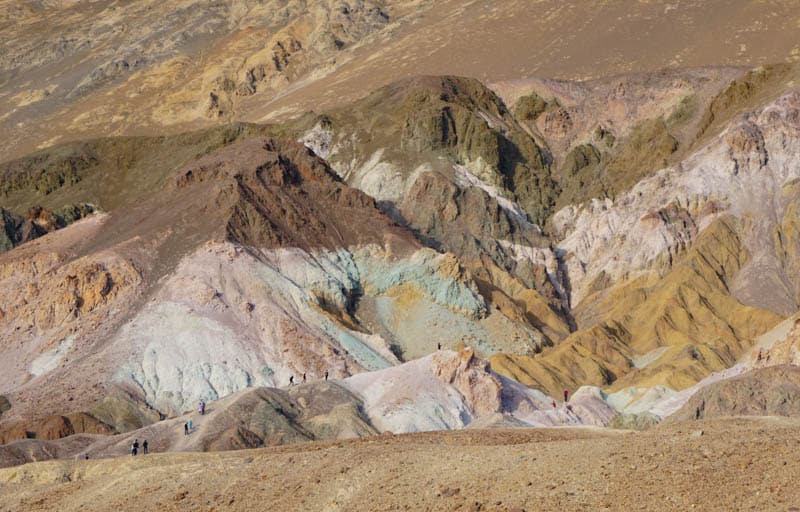
Pick a canyon to hike. Golden Canyon offers hikes of varying lengths and difficulties, and you can combine trails for a longer route.
Mosaic Canyon is another gorgeous hike, and you can go as deep into the canyon as you wish. Sidewinder Canyon takes you through three slot canyons and beautiful arches and natural bridges.
Marvel at the beauty of Mesquite Flat Sand Dunes. The undulating hills and valleys made of golden sand are best early and late in the day when the sun is low in the sky and you can enjoy the play of light and shadow.
Gape at the Ubehebe Crater. The enormous hole in the ground, found in the north of Death Valley National Park, is a maar volcano. You can just walk up and view the crater, or hike the rim.
Scotty’s Castle, in the far north of the park, is closed for renovation at the time of writing, but once it reopens, the unique desert home is worth adding to your Death Valley itinerary!
For park hours and current fees, visit the park website
Read More
The Best Things to Do in Death Valley National Park
Looking to rent an RV for your California National Parks vacation? Check out Outdoorsy or Escape Campervans to find the perfect vehicle for your trip!
Joshua Tree National Park: Boulders and Joshua Trees
Joshua Tree National Park is a unique desert park, because its location encompasses not just one but two distinct desert ecosystems: the Colorado Desert and the Mojave Desert.
Together with Death Valley National Park, Joshua Tree National Park makes up the great desert national parks of southern California.
The park gets its name from the wacky and weird Joshua tree that you’ll see in the northern part of the park. To the Mormons that reportedly named the tree, it looked like the Biblical character Joshua, with his arms raised in prayer.
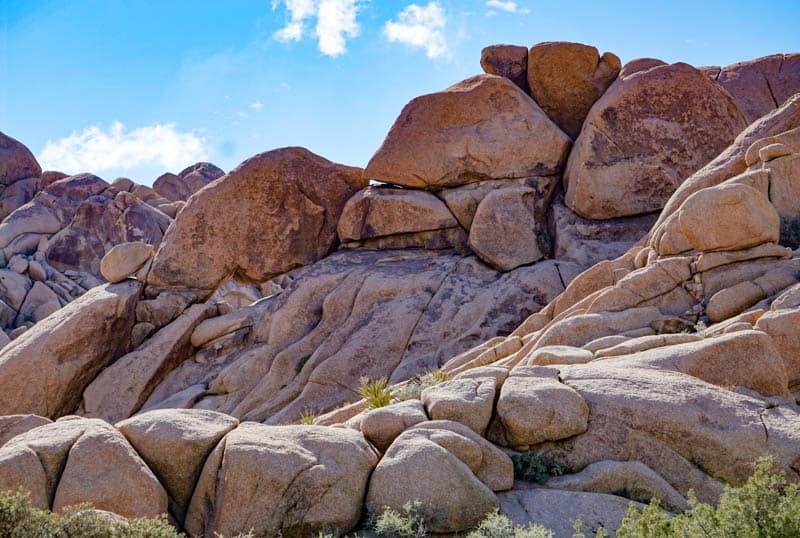
Located in southeastern California, Joshua Tree National Park is worth visiting for the diversity of its landscapes, the massive boulder formations that make it a rock climbing mecca, and the rich variety of flora and fauna that call the park home.
Joshua Tree is one of the easiest and best day trips from Los Angeles you can do.
Rock climbing and rock scrambling are hugely popular in Joshua Tree National Park. There are any number of trails to hike. You can also do the scenic drive through the park, go biking, explore backcountry roads, camp, stargaze, and enjoy birdwatching. Enjoy wildflowers in the spring.
For an in-depth look at different aspects of the park, join a ranger-led activity. Guided walks, lectures, and evening programs in the amphitheater are offered through the year.
If you want to stay in the desert and enjoy the night skies without camping, you will find nice places to stay in Joshua Tree and Twentynine Palms, two quirky towns just north of the park.
Top Places to Visit in Joshua Tree National Park
Drive Park Boulevard between the West Entrance near the town of Joshua Tree and the North Entrance near the town of Twenty-Nine Palms to see the spectacular rock formations. Skull Rock, which looks exactly like a skull, is the most famous rock on the route.
Visit the Cholla Cactus Garden, where you can walk the boardwalk trail among thousands of the cactus plants. Be careful, though, because the spines are painful if they pierce your skin.
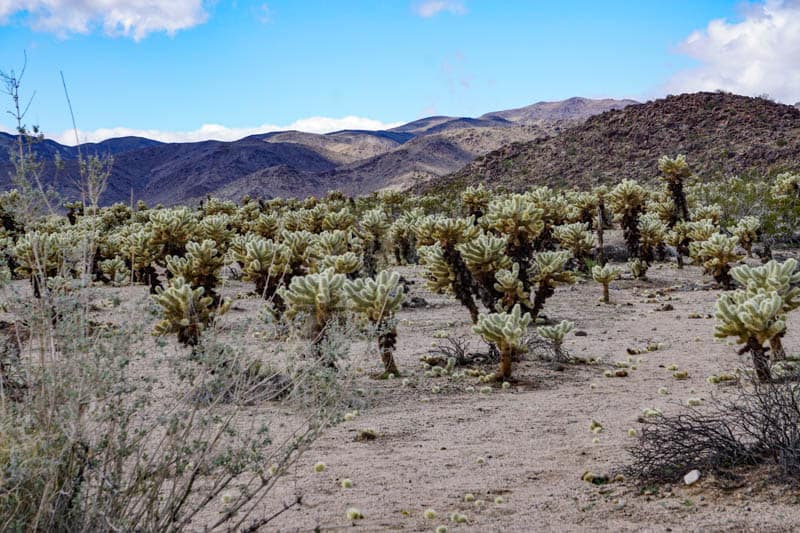
Near the south entrance to the park, marvel at the Cottonwood Spring Oasis, with its beautiful tall palms and picturesque trails. This is a great spot for birdwatching in the park.
Hike one of the many trails in the park. Two relatively short but rewarding trails are the Hidden Valley Trail, a one-mile loop past gorgeous boulder formations, and the Barker Dam Hike, which leads to a reservoir that’s best in the spring. At Barker Dam, you may spot wildlife, or birds, especially if there is water in the reservoir.
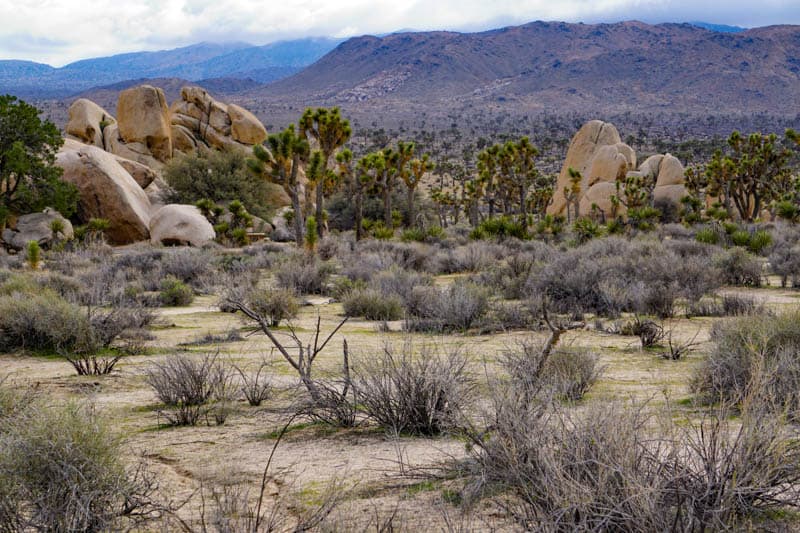
The Ryan Mountain Trail takes you to a high point in the park, for panoramas over the park and the surrounding areas.
Drive up to Keys View for panoramic views over the Coachella Valley, as well as Mount San Jacinto and Mount San Gorgonio. You may even be able to see Salton Sea shimmering in the distance. Sunset is a particularly popular time to visit Keys View.
For a peek into the park’s history as a gold mining site in the 1800s, do the hike to Lost Horse Mine, or join a ranger-led tour of Keys Ranch, former home of miner and rancher Bill Keys.
For park hours and current fees, visit the park website
Read More
The Best Things to Do in Joshua Tree National Park
Channel Islands National Park: Sea Arches and Cliffs
Sometimes compared to the Galapagos, the California Channel Islands are home to several thousand plant and animal species, a few dozen of which are unique to the islands.
Although just a few miles from the mainland, the Channel Islands feel like a completely different world.
Located off the Southern California coast, Channel Islands National Park encompasses five of the eight islands and the immediate ocean surrounding them: Anacapa, Santa Cruz, Santa Rosa, San Miguel, and Santa Barbara. You can only visit by boat or plane.
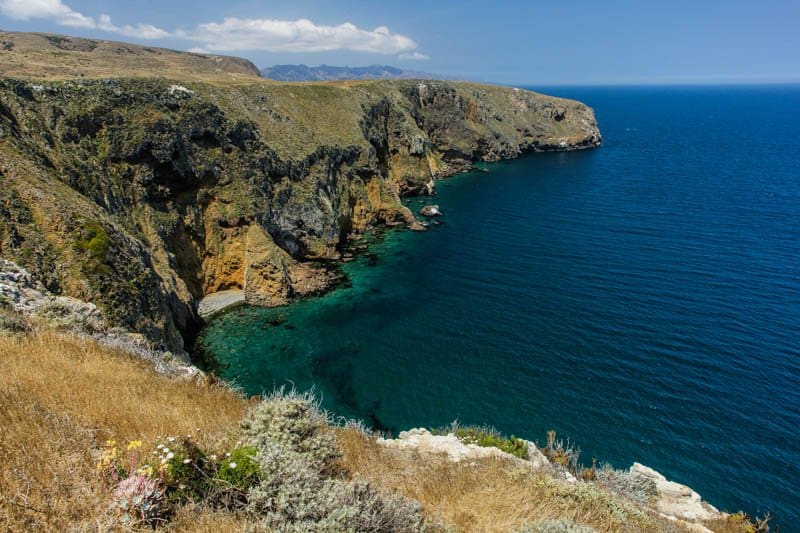
Channel Islands National Park features spectacular scenery, true wilderness, and a wide variety of flora and fauna. The water views from higher elevations on the islands are out of this world. Wildflowers bloom in the spring and early summer, with some species continuing to bloom through the summer.
Once on the island of your choice, explore on foot. Or take a kayak out onto the water. Hiking is one of the top things to do in Channel Islands National Park. Take in the views, birdwatch, and look for wildflowers as you walk. Water activities abound here: you can go snorkeling, diving, surfing, kayaking, boating, fishing, and tidepooling. Bring along a picnic, or camp.
Top Places to Visit in Channel Islands National Park
Each of the five islands in the Channel Islands National Park offers scenic overlooks from which to enjoy the views, spots where you are likely to see wildlife or birds, and opportunities for wildflower viewing.
On Anacapa Island, climb the stairs to the top of the island and then hike the figure eight trail for stunning views. Visit the Anacapa Island Light Station, the last permanent lighthouse constructed on the west coast.
Take a kayak out from the landing cove on Anacapa Island towards Arch Rock or Cathedral Cove to see natural arches and caves and to spot marine life.
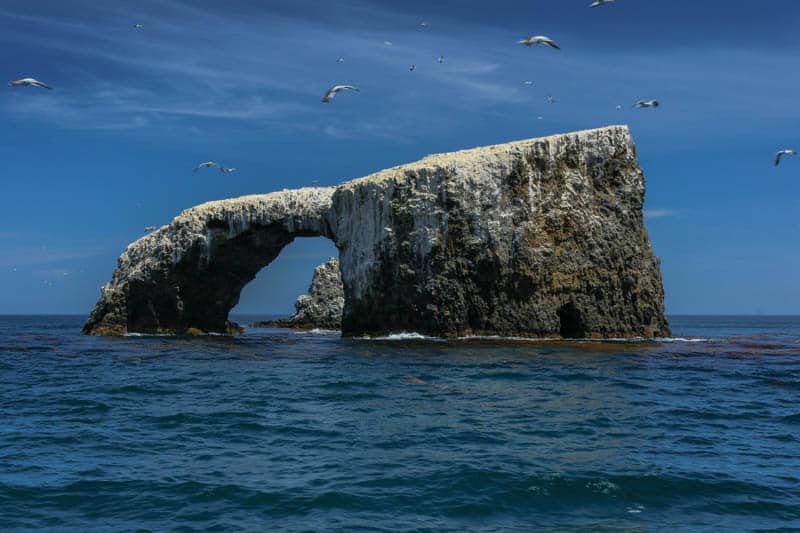
On Santa Cruz Island, hike the flat trails of Scorpion Valley or the challenging mountain trails of El Montañon. If you are an avid birder, head to Prisoners Harbor to spot the Santa Cruz Island scrub jay, found only on the island.
On San Miguel Island, walk Cuyler Harbor Beach and visit the Cabrillo Monument. Juan Rodriguez Cabrillo led the Spanish expedition that first landed in California. Visit the Caliche Forest on a ranger-led hike. Go birding in Nidever Canyon.
Also on San Miguel Island, if you are up for the challenge, do the epic ranger-guided hike to Point Bennett. Your reward for the 15-mile round trip? The chance to see thousands of elephant seals, sea lions, harbor seals, and northern fur seals lying on the beach in the largest wildlife assembly in the world.
For park hours and current fees, visit the park website
Lassen Volcanic National Park: Fumaroles and Hot Pools
Lassen Peak, the most famous volcano in Lassen Volcanic National Park, last erupted in the early 1900s. In this exciting corner of California, you can witness hydrothermal activity happening in front of your eyes, be it hissing fumaroles or bubbling hot pools.
Located in the Shasta Cascade in northeastern California, Lassen Volcanic National Park is one of the less visited California national parks, which can be a blessing if you love to experience the wonders of nature without crowds.
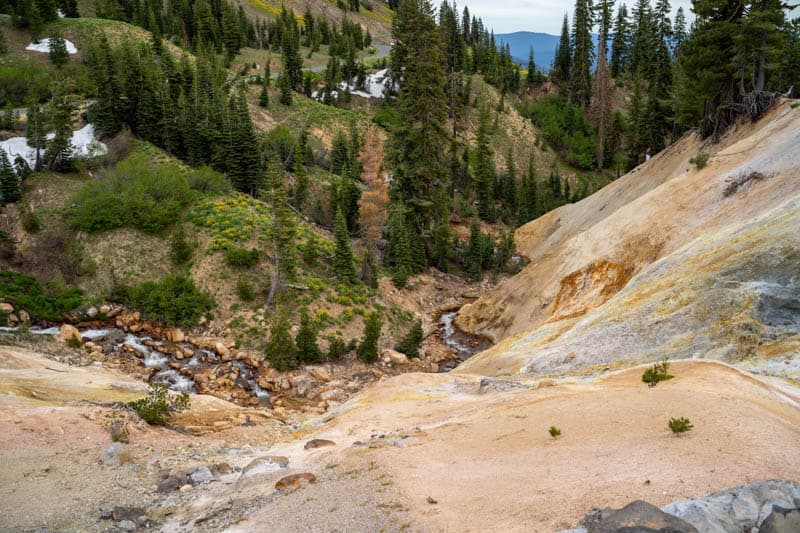
In our opinion the most unique national park in northern California, Lassen National Park is worth visiting for its hydrothermal features, including fumaroles, boiling pools, and mud pots.
But it’s also worth visiting for the spectacular scenery, featuring craggy peaks and flower-filled meadows, beautiful lakes and thick forests. And in the winter, the snowy wonderland will captivate you.
Drive the scenic 30-mile Lassen Volcanic National Park Highway. Hiking and biking are popular in the summer. You can also boat or kayak in the lovely clear lakes, camp, go backpacking, picnic, and stargaze in the park. If you visit in the winter, go snowshoeing or skiing, and enjoy the snowy landscapes.
Top Places to Visit in Lassen Volcanic National Park
Bumpass Hell is the most popular destination to see hydrothermal activity. Here you can view mudpots, fumaroles, and boiling pools up close, from a boardwalk that traverses part of the basin. Big Boiler is the biggest attraction here!
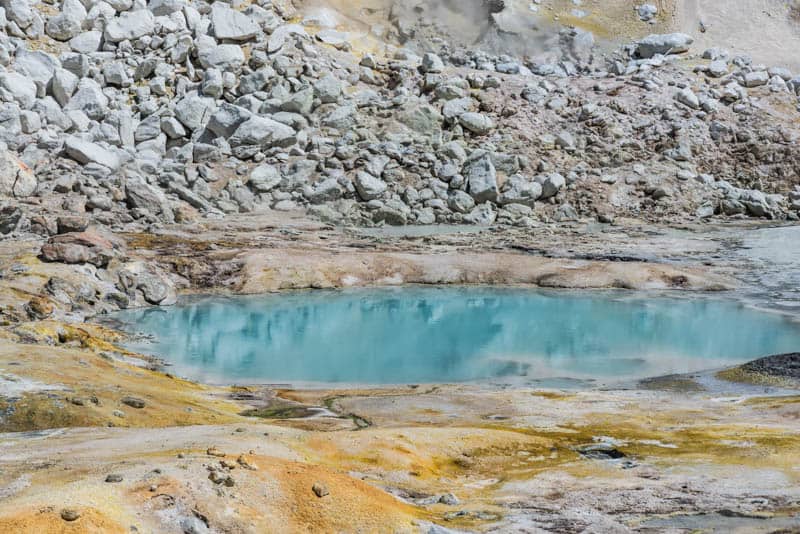
At Sulphur Works, the park’s most accessible hydrothermal area, you can view mudpots and fumaroles from a sidewalk.
You can hike to other parts of the park to view more hydrothermal activity. From the Warner Valley trailhead, you can hike to Terminal Geyser, which is spectacular even if it is not really a geyser. From this trailhead, can also access Boiling Springs Lake, a bubbling hot pool.
Stop in at the Kohm Yah-mah-nee Visitor Center to learn more about the park. There’s a short movie you can watch, and exhibits to view.
Also visit Loomis Museum, where you can see photos of Lassen’s latest eruption cycle. While there, do not miss doing the short walk to beautiful Manzanita Lake.
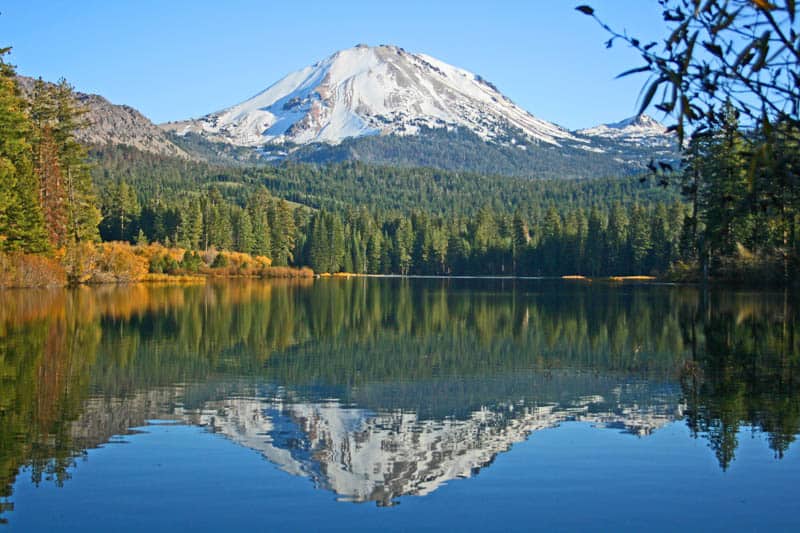
Hike 4 miles round trip to view Mill Creek Falls, the tallest waterfall in Lassen Volcanic National Park. Or the shorter loop to Kings Creek Falls: the lush greenery around the falls is gorgeous, and in season, you might see wildflowers in bloom. Keep your eyes peeled for wildlife and birds!
For park hours and current fees, visit the park website
Read More
The Best Things to Do in Lassen Volcanic National Park
Sequoia National Park: Giant Sequoias and Tall Peaks
Located in the Sierra Nevada, barely 75 miles from Yosemite National Park, Sequoia National Park offers a less crowded wilderness experience, and the opportunity to walk among giant sequoias, the largest trees on the planet.
Sequoia National Park is home to Mount Whitney, the tallest peak in the contiguous USA. Much of the park is designated wilderness, but you can access different areas via trails.
With towering mountain peaks, foothills that range from lush to barren through the year, groves of giant sequoias, and a great diversity of wildlife and birds, there’s a lot to see and do in Sequoia National Park.
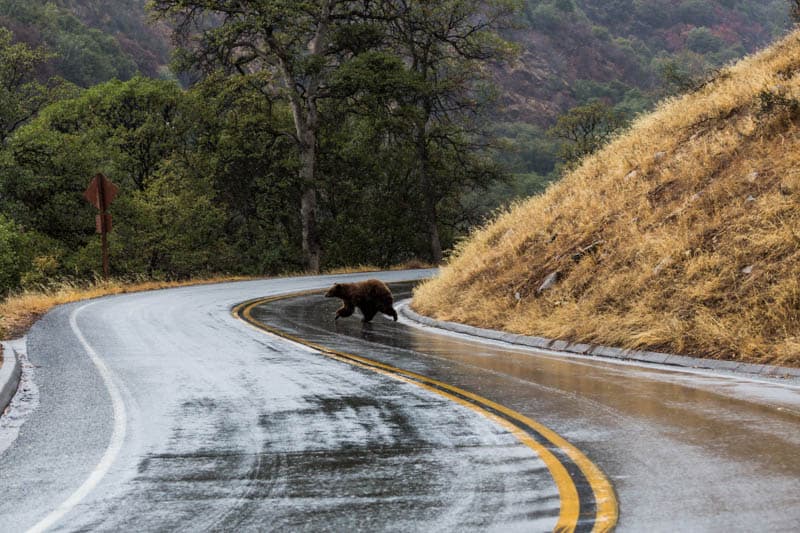
Walking among the giant sequoias is of course the most exciting thing to do in Sequoia National Park. But you can also hike, camp, birdwatch, go climbing or backpacking, enjoy photography, fish, go horseback riding, and stargaze. View wildflowers in spring and enjoy leaf colors in fall. In winter, you can go skiing or snowshoeing.
Top Places to Visit in Sequoia National Park
Explore Giant Forest, a large grove of mature trees that includes more of the really large sequoias than any other grove. Here you will find General Sherman, the largest tree on the planet. You can hike one (or more) of the trails through the grove. Also visit the Giant Forest Museum, to learn more.
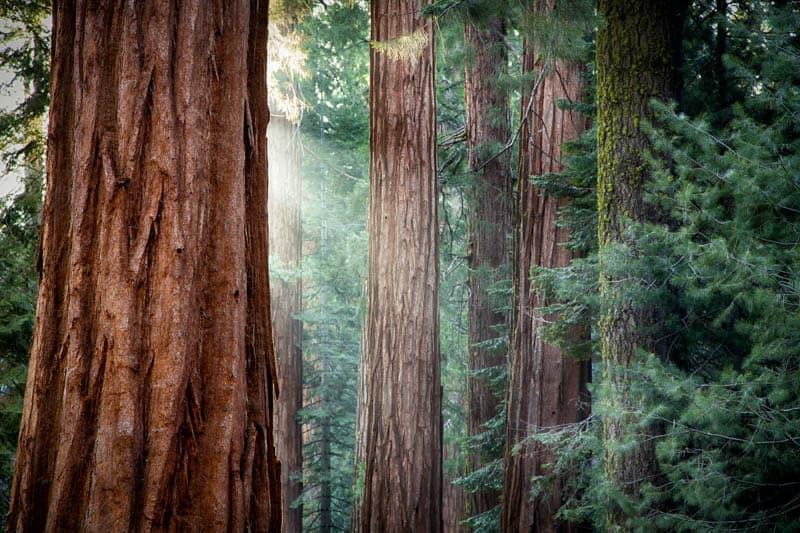
Climb the 350 steps to the top of Moro Rock. It’s rated strenuous but your reward is spectacular views over the surrounding wilderness, fringed by mountain peaks. Don’t want to make the climb? Moro Rock looks stunning from below as well!
If you visit between spring and fall, take the guided tour to Crystal Cave. The walk to the cave from the parking lot is steep, but the marble cavern is gorgeous and you can view it on a half-mile loop walk. Marvel at the polished marble, and the stalactites and stalagmites.
The Foothills day hike to Marble Falls is lovely. The falls are not tall, but they have plenty of water, especially in the spring and early summer. Keep your eyes open for birds and wildlife, and enjoy the variety of wildflowers along the route in season.
For another beautiful hike to a waterfall, consider the trail to Tokopah Falls. The walk through the canyon, with the towering walls surrounding you and the roaring river alongside, is super scenic.
Drive the winding road to Mineral King, a glacial valley encircled by tall peaks. The road is only open in the summer, and you’ll need an extra day to explore this part of the park. But it’s beautiful! Think flower-filled meadows, tumbling waterfalls, and beautiful lakes, all in the setting of mountains. Pick from a variety of day hikes to explore more.
For park hours and current fees, visit the park website
Read More
The Best Things to Do in Sequoia National Park
Kings Canyon National Park: Tall Trees and Deep Canyons
Kings Canyon National Park is located just 50 miles from Sequoia National Park, and the two parks are connected by the scenic Generals Highway, one of the most scenic drives in California.
If you have the time, it makes sense to combine visits to both parks, for an epic wilderness experience.
With one of the deepest canyons in the United States, towering trees, majestic mountains, and beautiful rock formations, Kings Canyon features landscapes that resemble those at Yosemite. But you’ll find Kings Canyon much less crowded!
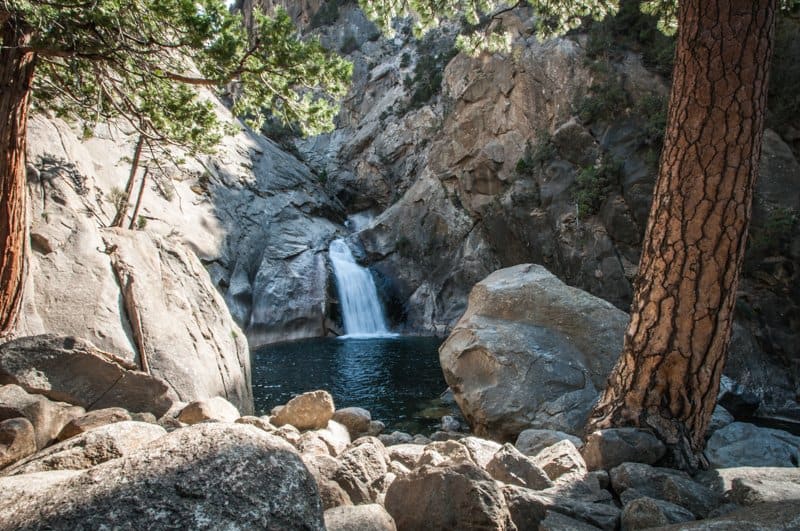
Similar to Sequoia National Park, much of the park is wilderness, without road access. The park is home to diverse fauna, including mule deer, bighorn sheep, and black bear, and numerous species of birds. Make sure you pack your zoom lens or binoculars!
At King’s Canyon, you can gape at giant sequoias, hike a variety of trails, go rock climbing, camp, backpack, do horseback riding, or enjoy water activities at area lakes. You can also stargaze, fish, observe wildlife, enjoy photography, or visit some of the historical sites in the park. In the winter, enjoy sledding, snow play, cross-country skiing and snowshoeing.
Top Places to Visit in Kings Canyon National Park
In Grant Grove, you will find General Grant, also known as “the nation’s Christmas tree.” Grant Grove contains a large number of mature sequoias and makes for a nice easy walk. Redwood Canyon, a short distance away, is one of the largest groves of sequoias anywhere, and you can explore it via a number of trails.
Visit Cedar Grove, on the canyon floor. From here, you can gape at two towering granite hulks: North Dome, and Grand Sentinel. Walk one of the easy trails along the Kings River.
Kings Canyon Scenic Byway, which connects Grant Grove to Cedar Grove, is a beautiful drive. If you visit in the spring, stop en route to do the quick hike to view the 75-foot drop of Grizzly Falls.
Do the super scenic hike to Zumwalt Meadow, especially if you visit in the spring. You’ll cross a bridge over the Kings River and then walk through wooded areas with views of the lush meadow.
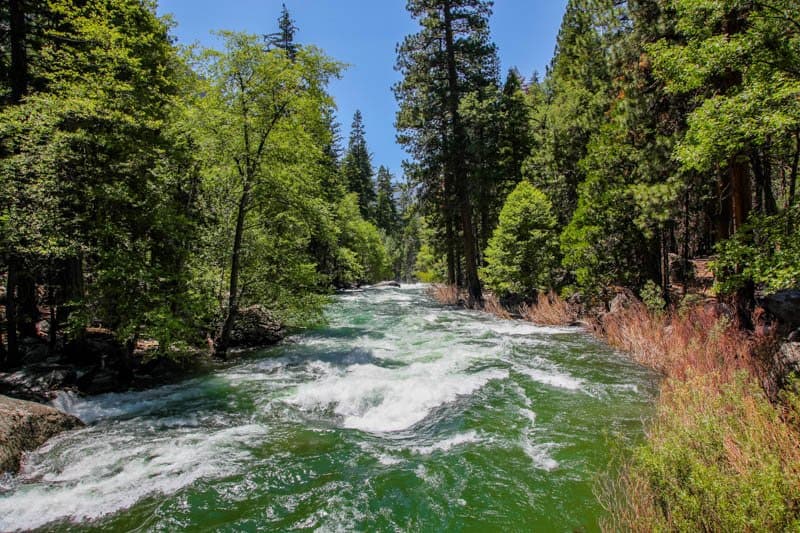
If you love waterfalls, don’t miss the hike to Mist Falls. It’s a long hike, eight miles round trip, but Mist Falls is the largest waterfall in Kings Canyon and Sequoia National Parks. Worth the effort! Roaring River Falls is a much shorter walk to a powerful waterfall.
For park hours and current fees, visit the park website
Redwood National and State Parks: Towering Redwoods and Coastal Views
Redwood National and State Parks is a group of four parks: Redwood National Park, Jedediah Smith State Park, Del Norte Coast State Park, and Prairie Creek Redwoods State Park. All feature beautiful old-growth coastal redwood forests.
Like the giant sequoias, the coastal redwoods of Northern California are towering tall trees, among the tallest, most ancient, and largest trees on earth. The parks, which protect just under one-half of the remaining redwood forests in the area, are designated a UNESCO World Heritage Site.
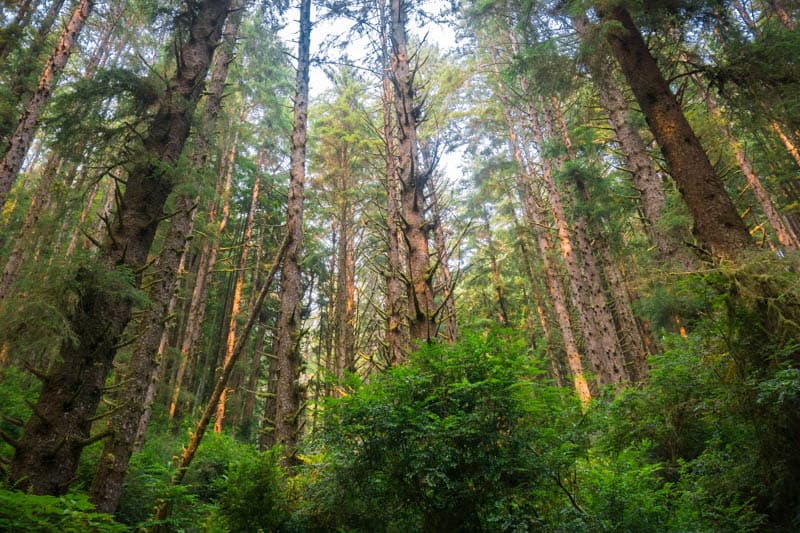
Aside from the redwood trees, visit for the spectacular coastal scenery, opportunities to view wildlife and marine life, and to enjoy other local flora, such as rhododendrons, a variety of wildflowers in season.
Walking coastal trails to experience the redwoods up close is the number one activity in these parks. Do some of the short scenic drives in the area, learn more about the parks at one of the visitor centers, bike, explore the backcountry, kayak, go tidepooling, or enjoy wildlife viewing.
Top Places to Visit in Redwood National And State parks
Visit the Thomas H. Kuchel Visitor Center to learn more about the parks and the coastal redwoods. With a picnic area, access to a beach, great exhibits, a movie to watch, and a bookstore, this visitor center is a great place to begin your visit.
Drive the Newton B. Drury Scenic Parkway, a 10-mile stunning stretch that’s worth driving end to end without stopping, to enjoy mile after mile of the gorgeous old-growth redwoods.
Of course, you can always come back to hike one of the many trails en route. A must-do is the Big Tree Wayside Walk, where a number of short easy walks take you up close to some giant redwoods.
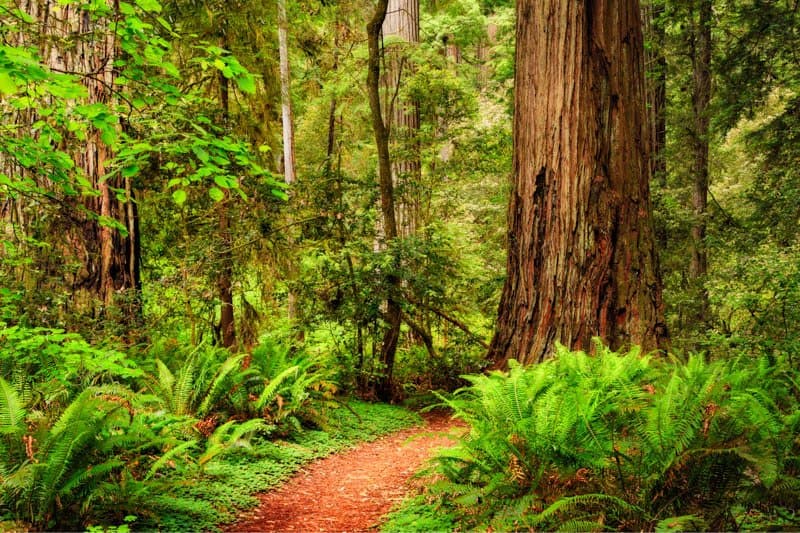
Another lovely hike at the southern end of the parks is the Lady Bird Johnson Grove walk. The 1.5-mile easy loop makes for a great up-close look at mature redwoods. Bald Hills Road, from which you access the trail, is a beautiful drive, past prairies with wildflower carpets in season.
The Fern Canyon Loop Trail is one of the most popular trails in this group of parks. You’ll likely get your feet wet, but the little canyon, covered with lush green ferns, is breathtaking.
Do the short scenic drive to Enderts Beach for gorgeous coastal views, opportunities to see elk, and whale watching in season. Bring along a picnic to enjoy at the beach. Or do the super scenic Coastal Drive, a loop that offers stunning water views and a look at the estuary of the Klamath River.
For park hours and current fees, visit the park website
Read MORE
The Best Things to Do in Redwood National and State parks
Pinnacles National Park: Pinnacles, Condors, and Caves
One of the newest parks in the National Parks Service system, Pinnacles National Park in Central California is a great place for a sighting of the magnificent California condor. The largest land birds in North America, California condors have wing spans of 9.5 feet!
The pinnacles of Pinnacles National Park are the remnants of an extinct volcano that has actually moved 200 miles from its original location on the San Andreas Fault. The park is divided into two sections, connected only by foot trails.
Pinnacles NP makes for a great day trip from San Francisco (or anywhere in the SF Bay Area). It is a small enough park that you can spend one day in Pinnacles National Park and still see quite a bit of it.
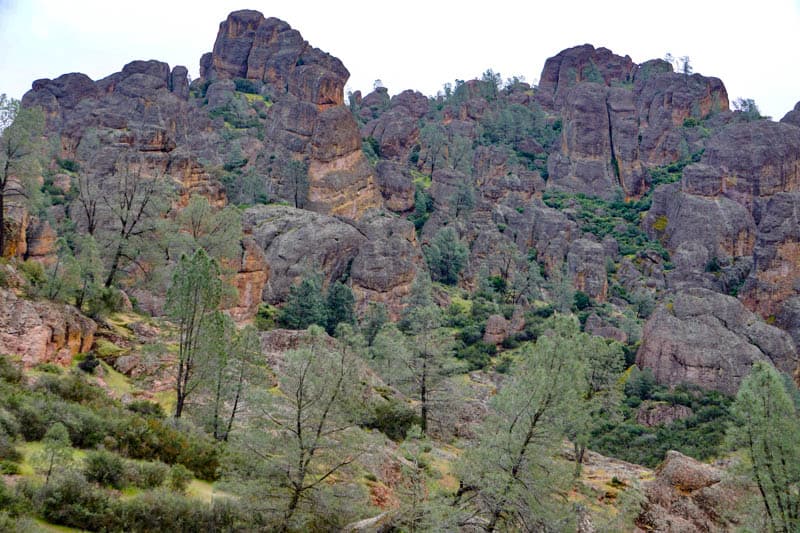
Apart from the picturesque pinnacles that give the park its name, Pinnacles National Park also features interesting talus caves, several species of birds of prey, a variety of other birds and animals, and more species of bees than anywhere else on earth.
Read More
One Day in Pinnacles National Park
Pinnacles National Park is relatively small, and currently one of the less visited California national parks, which means you can even have a trail here to yourself if you time your visit right!
Hiking is the major reason why you’d visit Pinnacles National Park. The variety of trails in the park take you past its unique landscapes, and allow you to explore the caves when open. You can also go rock climbing here, and birdwatching. In season, you’ll find lots of wildflowers along the trails.
Top Places to Visit in Pinnacles National Park
If you are visiting via the east entrance to Pinnacles National park, hike to Bear Gulch Cave, one of two talus caves in the park. After you explore the cave, hike a little bit beyond to the beautiful Bear Gulch Reservoir.
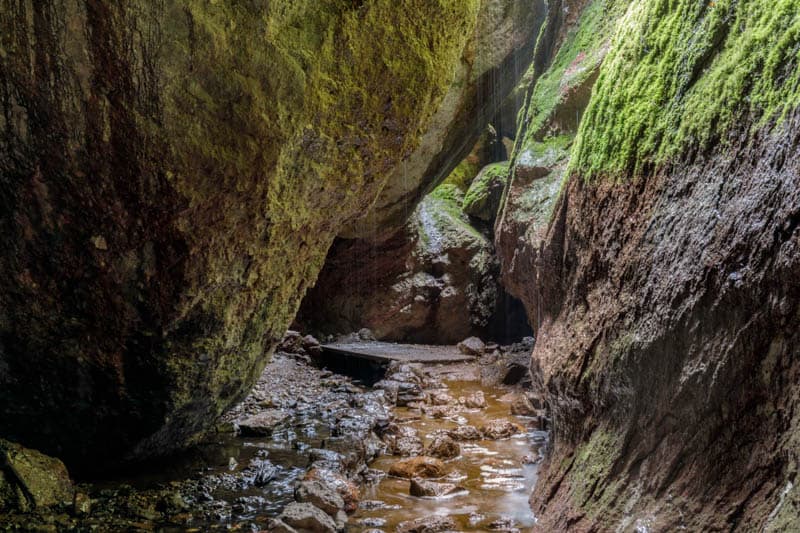
If entering from the west side, hike to Balconies Cave. On the way back, cross over to the Balconies Cliffs trail to view the massive rock formations of Balcony Cliffs and Machete Ridge.
The two talus caves are fun to explore, with narrow passages between rocks. Bear Gulch Cave houses a colony of Townsend’s big-eared bats, and may be closed when the bats are breeding. Bring a flashlight!
Hike the Condor Gulch Trail at least up to the Condor Gulch Overlook, for magnificent views of the High Peaks, the tallest of the spires in the park. For an epic hike, consider the Chalone Peak trail, which brings you to North Chalone Peak, the highest spot in the park.
For park hours and current fees, visit the park website
*****
It’s no wonder that California’s national parks feature high on the wish list for most visitors to the Golden State. With their astounding beauty and infinite opportunities for interaction with nature, they definitely deserve top billing on any California trip itinerary!
And if you enjoy being outdoors, California is home to many other federally managed recreation areas as well as hundreds of state parks.
We have in-depth guides to Cabrillo National Monument in San Diego, Devils Postpile National Monument in Mammoth Lakes, Muir Woods National Monument just north of San Francisco, and Carrizo Plain National Monument in Central California.
Also check out our guide to Point Reyes National Seashore and our round-up of the best state parks in California to visit!
Did you find this article informative? Pin it for later reference!
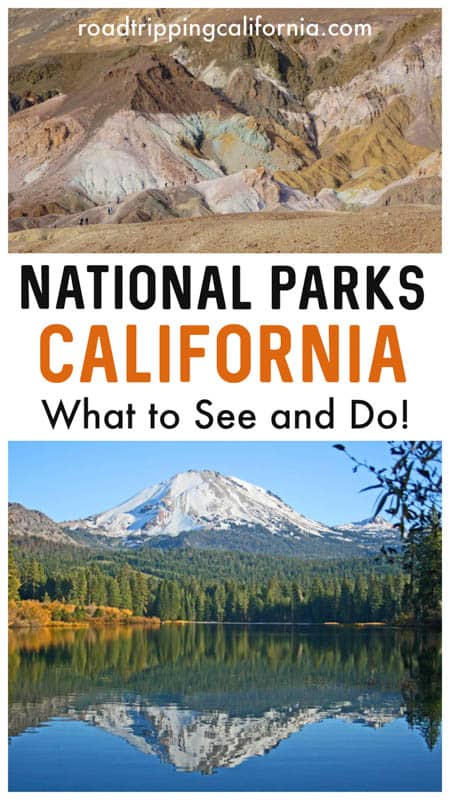
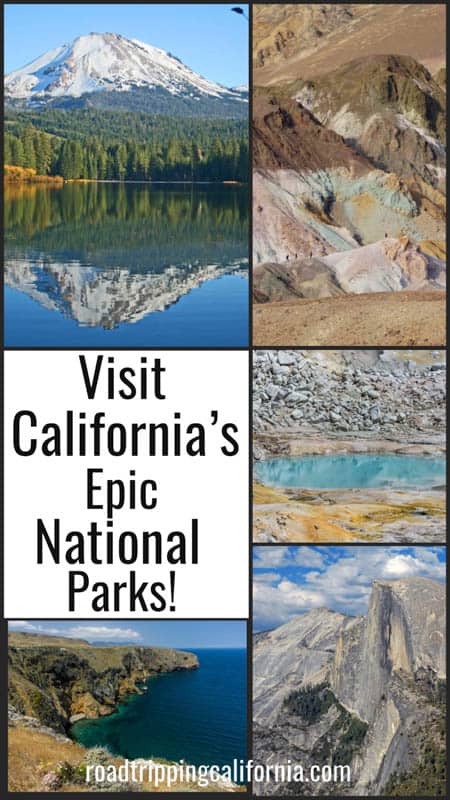
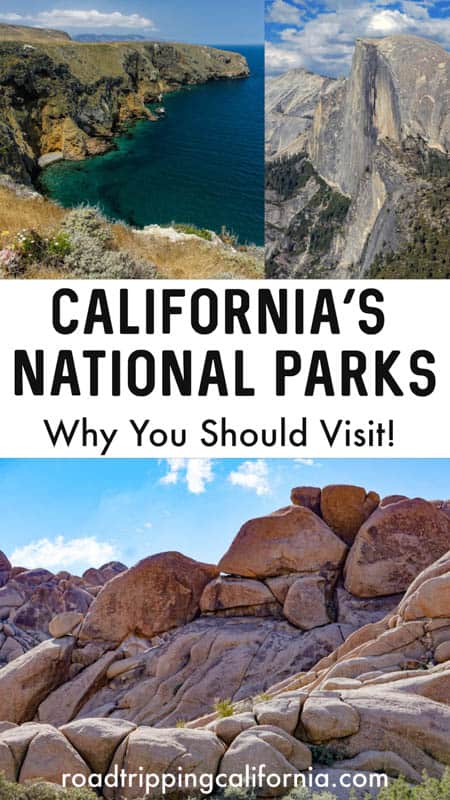

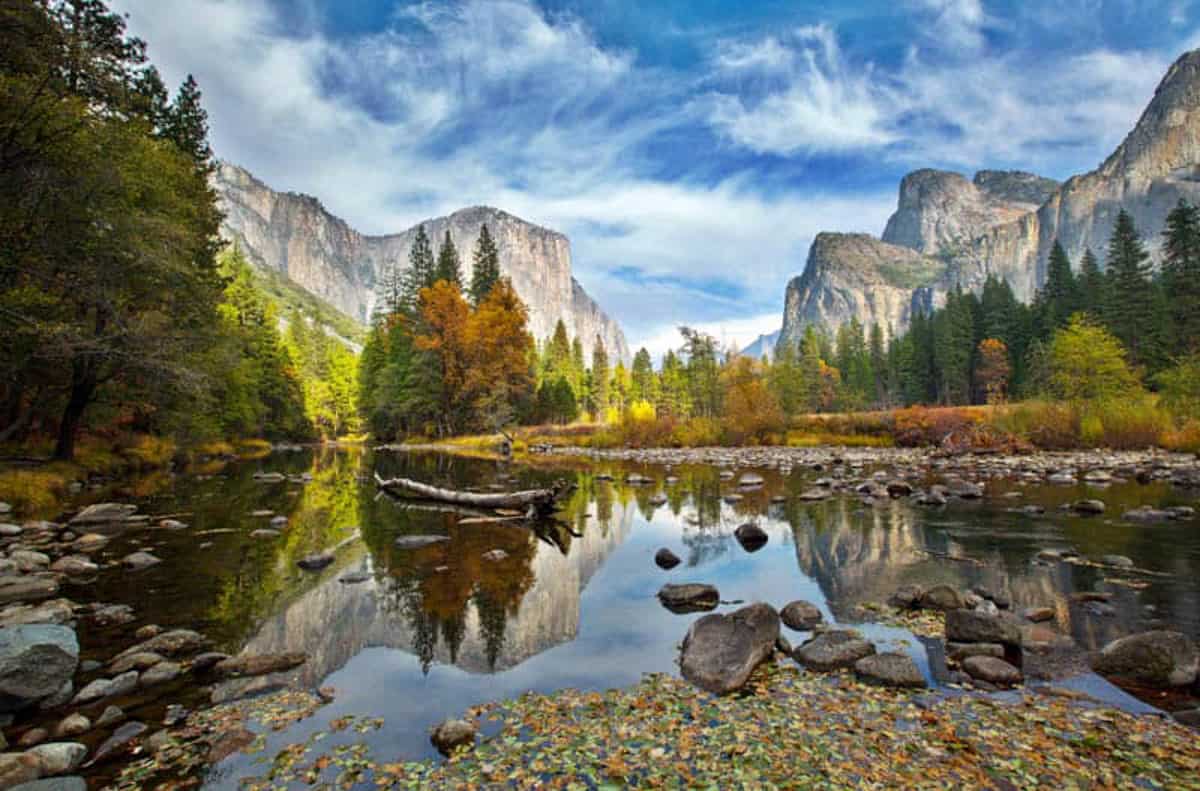
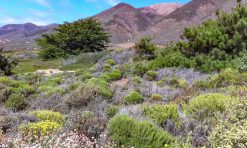
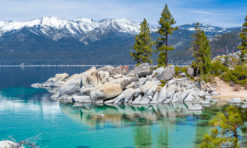
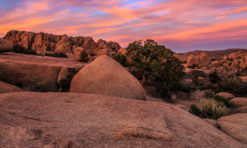
VERY BEAUTIFUL ❤️ THANK YOU VERY MUCH